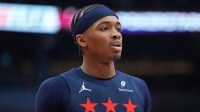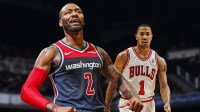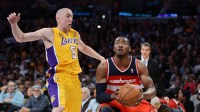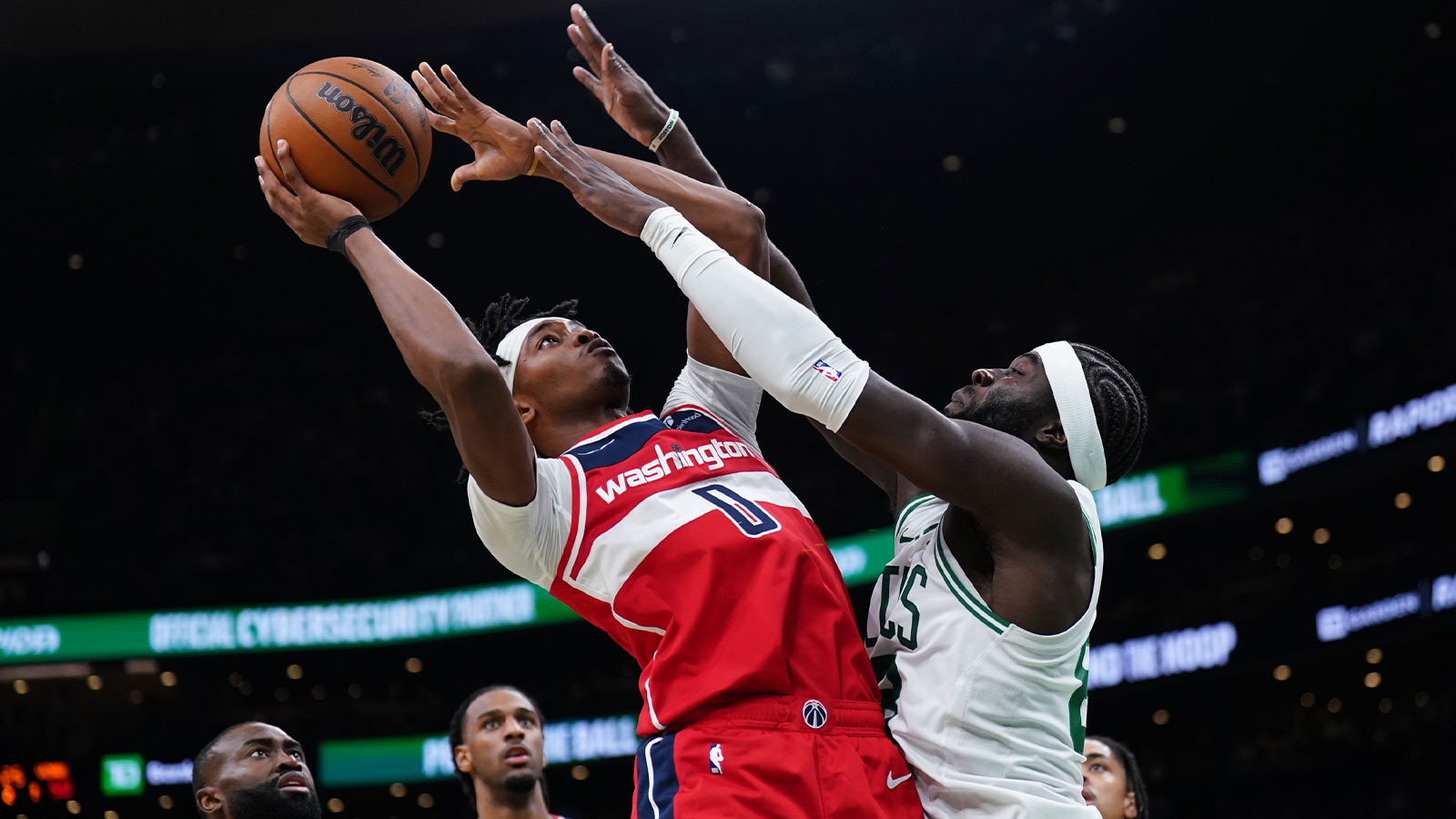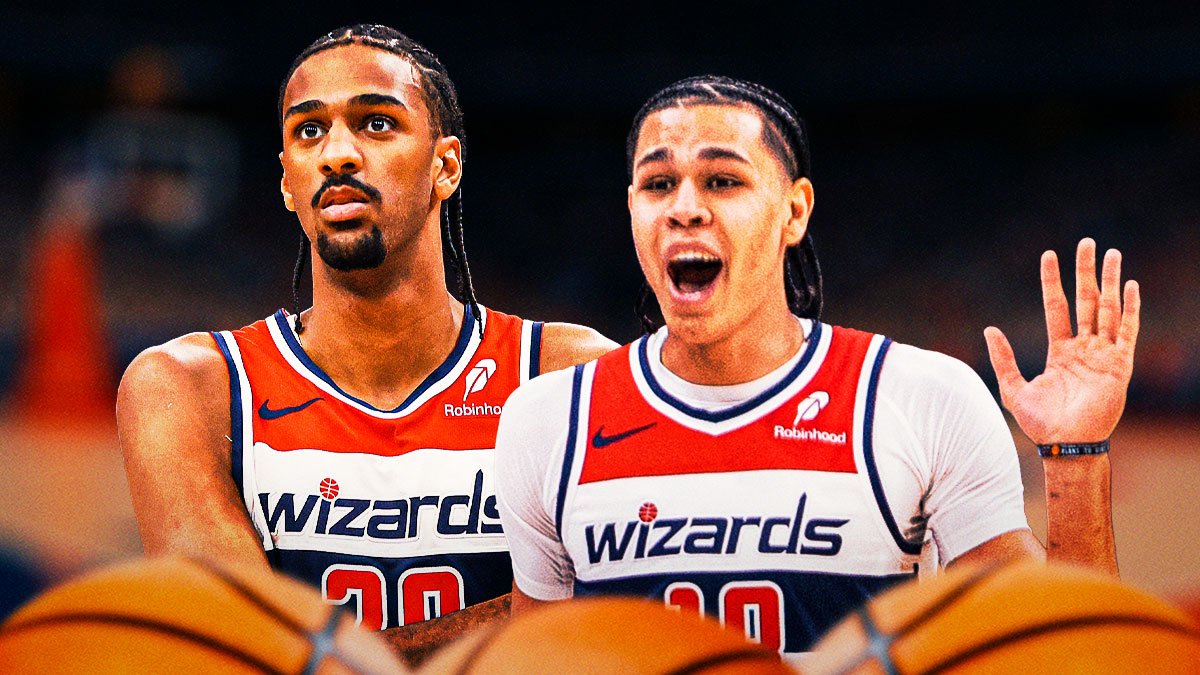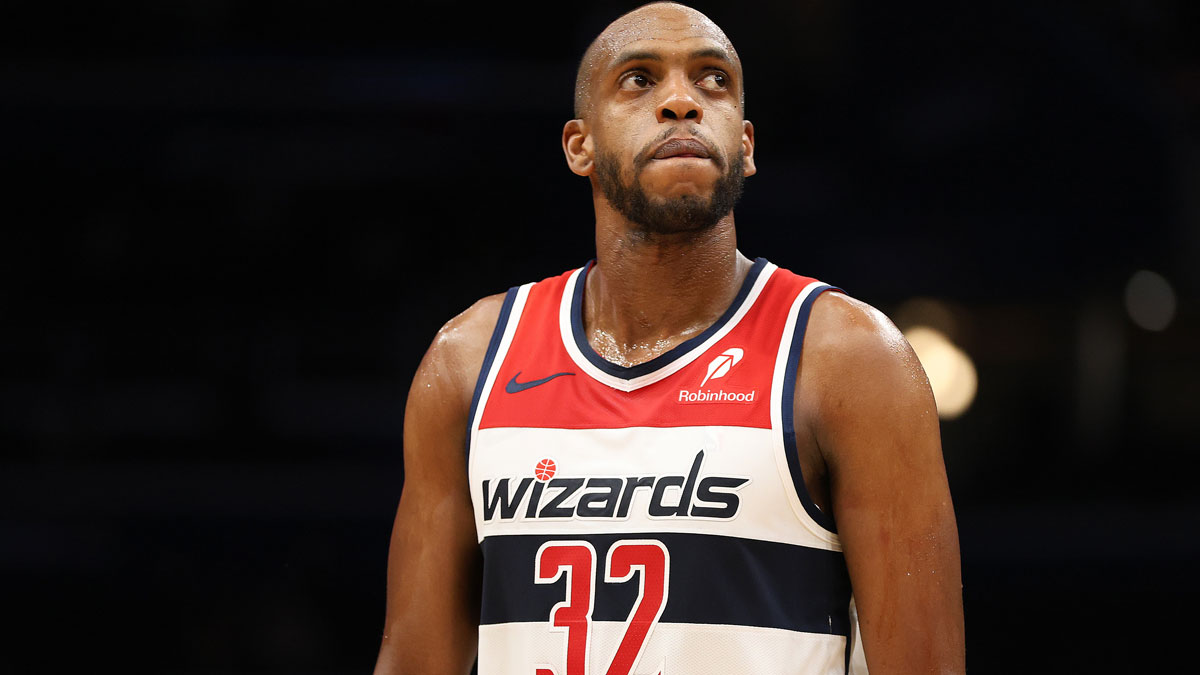The Washington Wizards' 129-106 home loss to the 1-11 Brooklyn Nets on Sunday made the entire organization step back and evaluate what it needs to do to be more competitive. Two days later, general manager Will Dawkins revealed a change it'll make in the near future, via “Sports Junkies” on 106.7 The Fan.
“I will say that [head coach Brian Keefe] is playing a lot of different players in a lot of different lineups. You'll probably see that number of 11 guys start coming down now that we've given some guys some opportunities,” he said. “Put people out there for longer stretches, so shrinking the rotation a little bit.”
To Dawkins' point, every player on Washington's 18-man roster has gotten minutes and 11 have played in at least 11 of its 14 games thus far (stats will be updated following the conclusion of its game against the Toronto Raptors on Friday). That number would be 12 if third-year wing Bilal Coulibaly hadn't missed time with injuries.
Furthermore, 10 players are averaging 15-plus minutes, not including forward Justin Champagnie, who's started in three out of his 12 appearances. The Wizards aren't the only team that has experimented with their rotations to kick off the season, but it's time to make some tough decisions.
Wizards must live up to preseason mantra

Dawkins promised in his preseason presser that Washington's rotation would be a meritocracy this year, via Monumental Sports Network's Chase Hughes.
“With that comes a lot of competition and I told them last year a lot of stuff was given more than earned,” he said. “This year that can’t be the case and everybody in here has to feel that. That’s what’s going to sharpen iron. Iron sharpens iron.”
The Wizards gave their rookies the keys last season, as Bub Carrington (30 minutes per game), center Alex Sarr (27.1), and wing Kyshawn George (26.5) were first, third, and sixth among all rookies in average minutes, per NBA.com. Dawkins assured that this season would be different.
“I literally was like ‘hey, these rookies got a lot of minutes [last] year, who’s taking their spots?’ That’s the mentality we’ve gotta have,” he continued.
Dawkins' philosophy makes sense, as Washington is now further along in its rebuild. With George, Sarr, and Carrington all in their second seasons and Coulibaly in his third, there's no need to have rookies get playing time without earning it anymore.
Entering Friday's matchup with the Toronto Raptors, George leads with 31.5 minutes per game, followed by veteran guard CJ McCollum (29.6) and Sarr (29). Rookie guard Tre Johnson is seventh (24.6), while fellow rookies Will Riley (7.1) and Jamir Watkins (seven) are near the bottom of the list.
How should Keefe organize the minutes when he shortens the rotation?
Ideal Wizards rotation (at full health)
Washington's lineup will likely change by the February's NBA Trade Deadline, as it has little incentive to keep McCollum and fellow veteran Khris Middleton after that. However, here's a rotation that would help develop the young players while also keeping the older ones involved in the meantime:
Starting lineup (each player gets 25-plus minutes per game):
Guard – CJ McCollum
Guard – Tre Johnson
Wing – Kyshawn George
Wing – Bilal Coulibaly
Center – Alex Sarr
Bench:
Sixth man – Cam Whitmore (25 minutes)
Backup forward – Khris Middleton (20 minutes)
Backup guard – Bub Carrington (20 minutes)
Backup center – Marvin Bagley (15 minutes)
Last spot – Either Champagnie, guard Corey Kispert, or wing Will Riley depending on the game (around seven minutes)
This arrangement ensures that McCollum and Middleton, who are making a combined $64 million this season (per Spotrac), get playing time as the organization tries to increase their trade value. Otherwise, the rotation is dominated by players in their first three seasons.
As for the meritocracy perspective, Johnson has earned more playing time than Carrington so far. Johnson is averaging 11.4 points on 43.5 percent shooting (38 percent 3-point) with 3.1 rebounds and 1.3 assists, while Carrington is averaging 6.1 points on 33 percent shooting (43.9 percent 3-point) with 3.8 rebounds and 4.1 assists in 26.1 minutes. Johnson also third on the team with a -12.5 net rating, while Carrington is third-to-last at -25.3, per NBA.com.
Meanwhile, Whitmore has shown the ability to be a spark plug. The 21-year-old scored a combined 39 points (13-24 FG, 4-11 3-point) across 58 minutes against the Dallas Mavericks and Detroit Pistons on Nov. 8 and 10, respectively, and he's reached double-digit points in six of his 14 appearances off the bench. Combine that with a defensive rating that ranks seventh on the team (120.6), and he's done enough to earn the sixth man role.
Once Middleton and McCollum are gone, it'll open up more minutes for Champagnie, Kispert, Riley, and Watkins as well as big man Tristan Vukcevic. Kispert is the elder statesman of that group and is the team's third-highest paid player ($13.98 million), but he's less likely to be part of the team's future than Whitmore or Carrington. The 26-year-old doesn't fit the Wizards' timeline, as he's entering his prime while they're still multiple years from becoming a championship contender. Therefore, it doesn't make sense to give him one of the core bench spots within the current roster construction.
Ideally, the meritocracy would apply to every player, but it makes more sense to enforce it among those that Washington wants to keep long-term. Carrington has struggled, but he earned second-team All-Rookie honors last season and could develop into a quality combo guard. Therefore, it would be unproductive to phase the former Pittsburgh Panther out of the rotation entirely despite his regression.
Additionally, the rotation will likely be fluid, with performance and injuries changing the dynamic throughout the season. However, the above lineup gives Washington the best balance between integrating its veterans and developing the young core.


